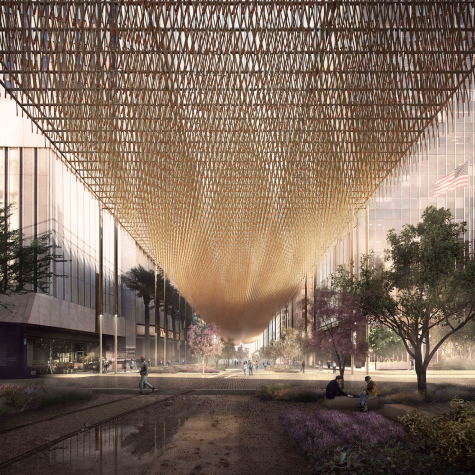Landscape Designer Soren deNiord on Finding the Truth Through Design
“Anything more than the truth would be too much.”
MH+D ASKS DENIORD TO TELL US MORE.
Q: What is “quiddity” and how does this word influence your work?
A: The definition of quiddity is the essence of something, its “whatness.” I interpret the word in the context of design as “truth,” one that is based on the particulars of each project: the site ecology, geology, cultural context, empirical data, client’s values, natural phenomena, design team, budget, and program. I often think of Robert Frost’s phrase, “Anything more than the truth would be too much.” Trying to find the truth of the site is the design challenge. For me, this process begins as additive—collecting as much information as possible to understand the project as a whole. Then through iterative design studies, I test and eliminate elements that don’t work or fit. Paring and paring and paring back even further, the design eventually reveals itself.
Q: How does the Maine landscape help guide you to the truth of the site?
A: Every project is different, but fundamen- tally I’m interested in asking the question, “What does it mean to feel connected to this place?” So much of living in Maine is the immersive outdoor experience, whether viewing or interacting with our landscape. How do we create heightened moments of awareness? How can we harness seasonality and phenomena to embed memory and emotion? On residential projects, this may mean siting a structure and “healing it” with grading and planted forms so that it appears as if they were always there—then editing out any formal design to make sure it does not distract from or compete with the natural context (a horizon line, for example, or a rocky outcrop). Other times the design is more overt, framing a view or creating a broad flush of plantings that surprises and jolts a sort of consciousness. Ultimately the goal is to create moments of appreciation of one’s place in the world and a sense of connectedness to the environment.
Q: Do the other members of the project’s design team impact your design?
A: We work closely with a range of collaborators: architects, developers, builders, craftspeople, homeowners, etc. The most successful projects come about when we are able to join the design team early. That way we have the ability to consider how the building’s massing works within the larger landscape, testing the structure from the outside in and inside out. For residential design, the landscape is such a fundamental part of the home experience that the house and landscape really inform one another. I work to extend the architectural intentions into the project site, creating a cohesion of spaces and materiality that echo throughout the project.
Q: You’ve been involved with some well-known urban art projects. How do you integrate art in your work to reinforce quiddity?
A: The idea of using landscapes as a platform to ask questions and add meaning to places excites me. Landscapes, whether public or private, have the potential to activate a discourse through art and engage communities. By collaborating with artists or creating landscape elements that convey ideas, place, truth, and art become inseparable. This is not a new idea; I absorbed it through traveling and studying in Europe, where architecture, landscape, and art are so unified. I’m currently a board member of TEMPOart, a local nonprofit organization that champions public art in the city of Portland. We strive to use public spaces as an armature for art, a mirror of sorts that helps us make sense of our evolving city.
Q: Lastly, how did you arrive in the field of landscape architecture?
A: I studied land-use policy and fine art in college and was looking to pursue a career in one of those two fields. After researching graduate schools, I discovered that landscape architecture could provide a complementary balance to both my interests. I was drawn to the idea that I could fuel my creative ambitions and apply my knowledge of the natural world. The discipline is very broad. I’ve gravitated to residential design, but I’m also fortunate to work in both the commercial and public realms. I love the variety of scale and thinking involved in the day to day. One moment I can be detailing paving patterns or developing a master plan and the next brushing up against big philosophical ideas, contemplating beauty, quality, and nature.



